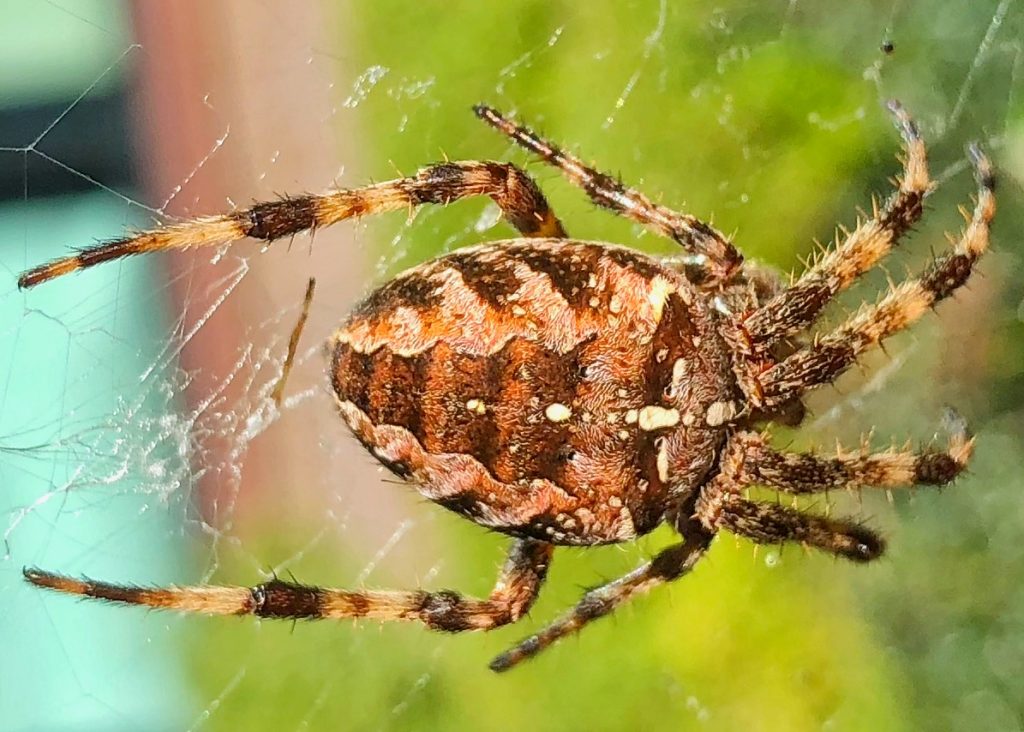
This member of the family Araneidae (orbweavers) is native to Europe but now has a holarctic distribution. Anecdotally I would say it is the most common orbweaver in sw Washington State. It is certainly the one I see most often. Like most orbweavers, they complete their life cycle in a year, hatching from overwintered eggs in the spring, mating in the fall, and dying during the first hard frosts.
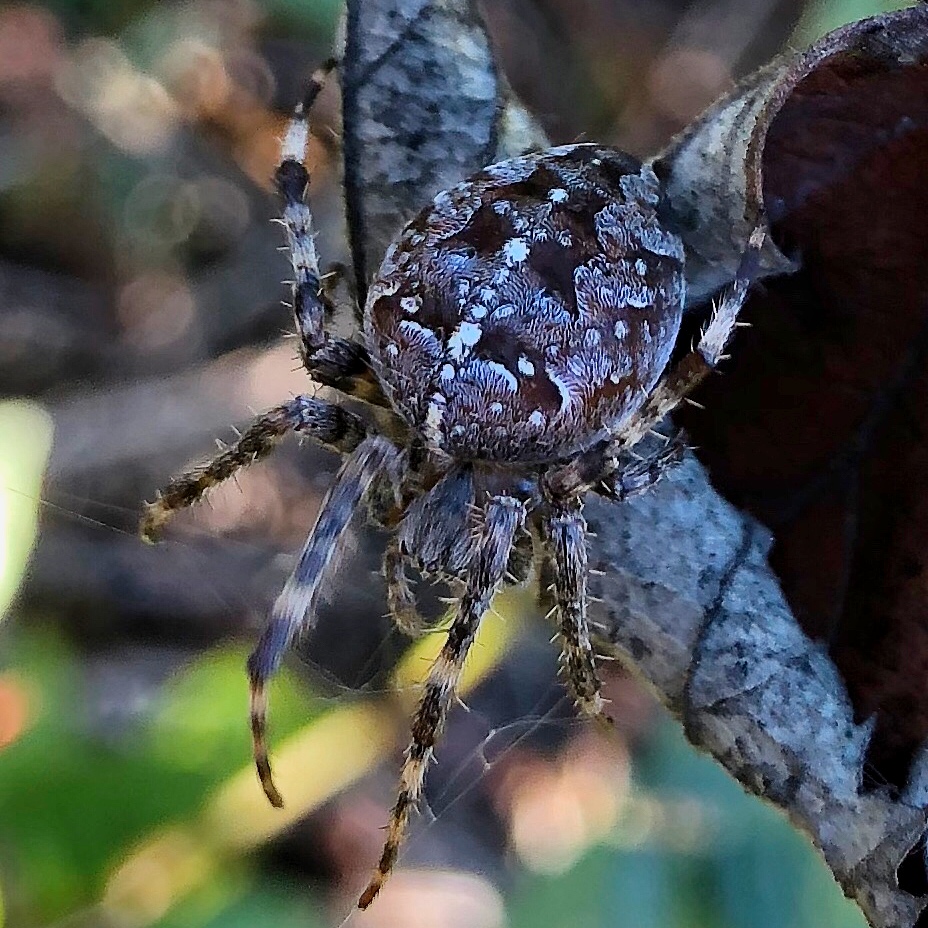
Araneus diadematus is a fairly large spider, and females can have a body length of up to 3/4”. The body color can range from orange to dark grey, and they usually have 2 lines of dots and dashes that form the eponymous cross on the front of the abdomen, with a pair of low bumps near the crossways line.
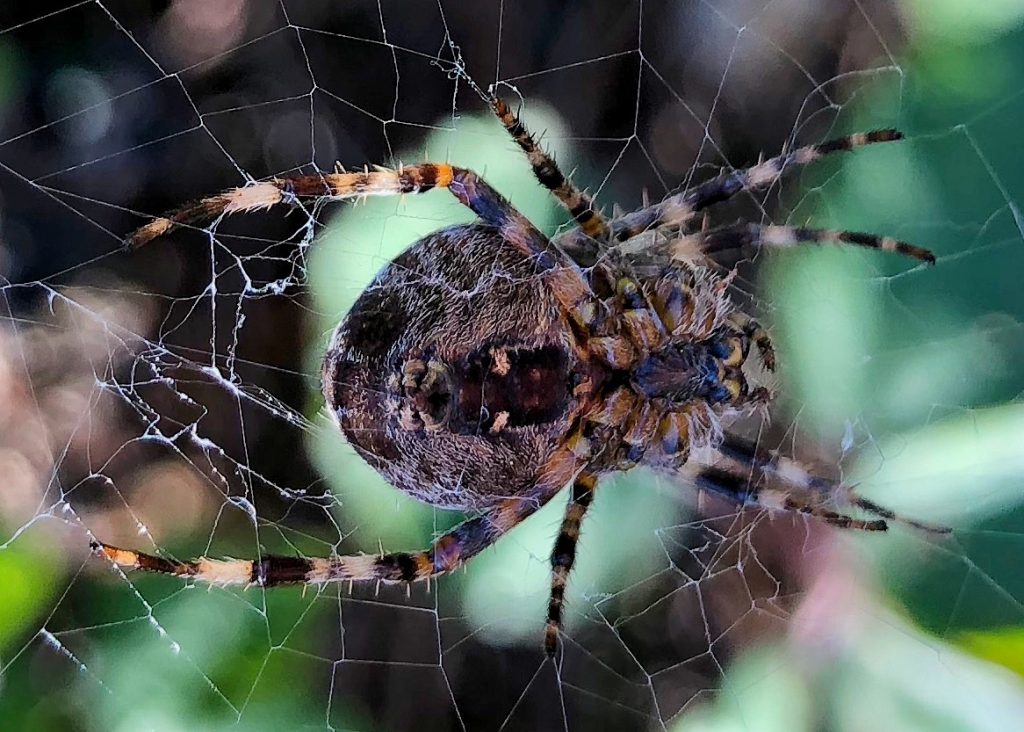
The only spider they can be confused with in our area is Araneus gemma, but that spider usually doesn’t have the crossways line. But occasionally you will encounter A. diadematus without a cross, or A. gemma with a cross. In these cases they can be differentiated by the fact that the abdominal bumps on A. gemma are much larger than those on Araneus diadematus.
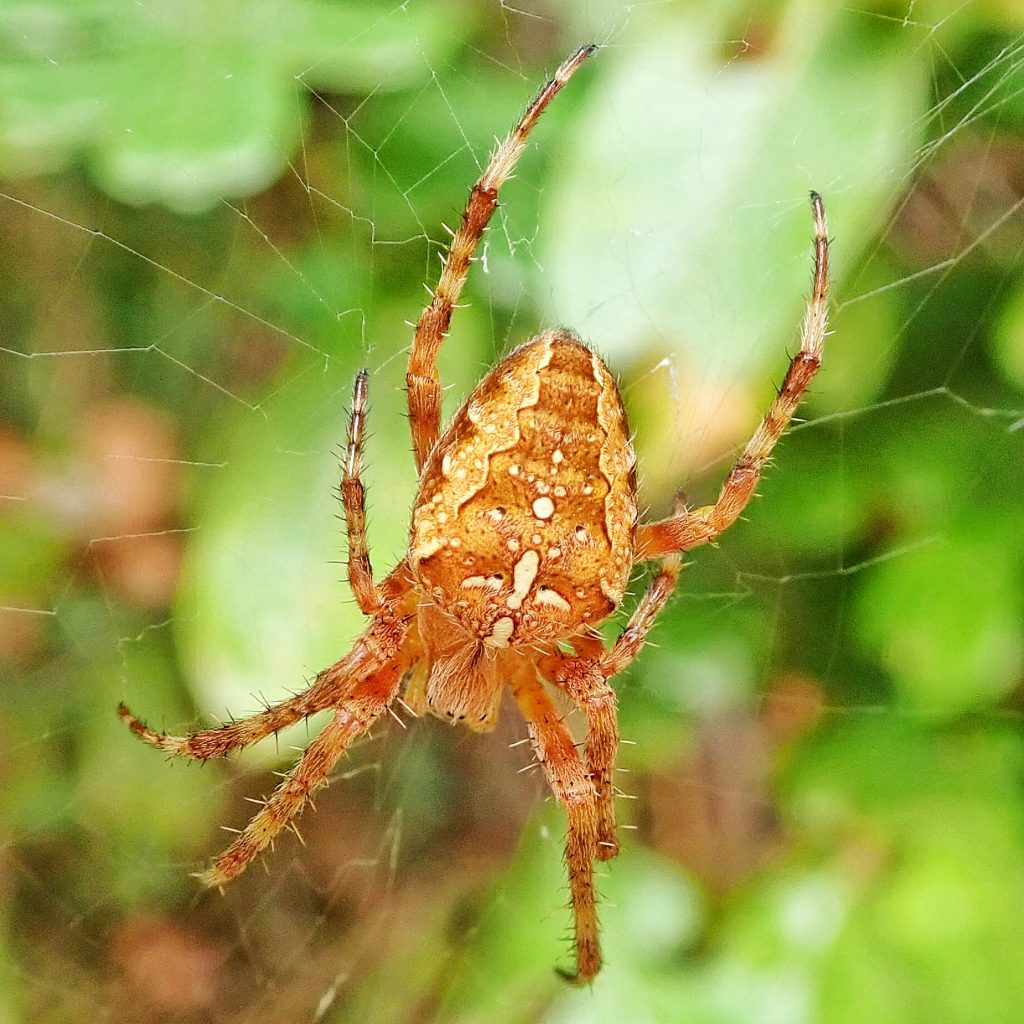
Cross Orbweavers employ 3 main defense strategies. They either scamper to hiding at a nearby anchor point, rappel rapidly to the ground on an attached strand of silk, or stay in their hub but vibrate so fast they become a blur.
This is the species that went into space in 1973 to determine the effects of zero gravity on web building. And they have also been used as subjects in experiments on the effects of psychoactive drugs on web construction.
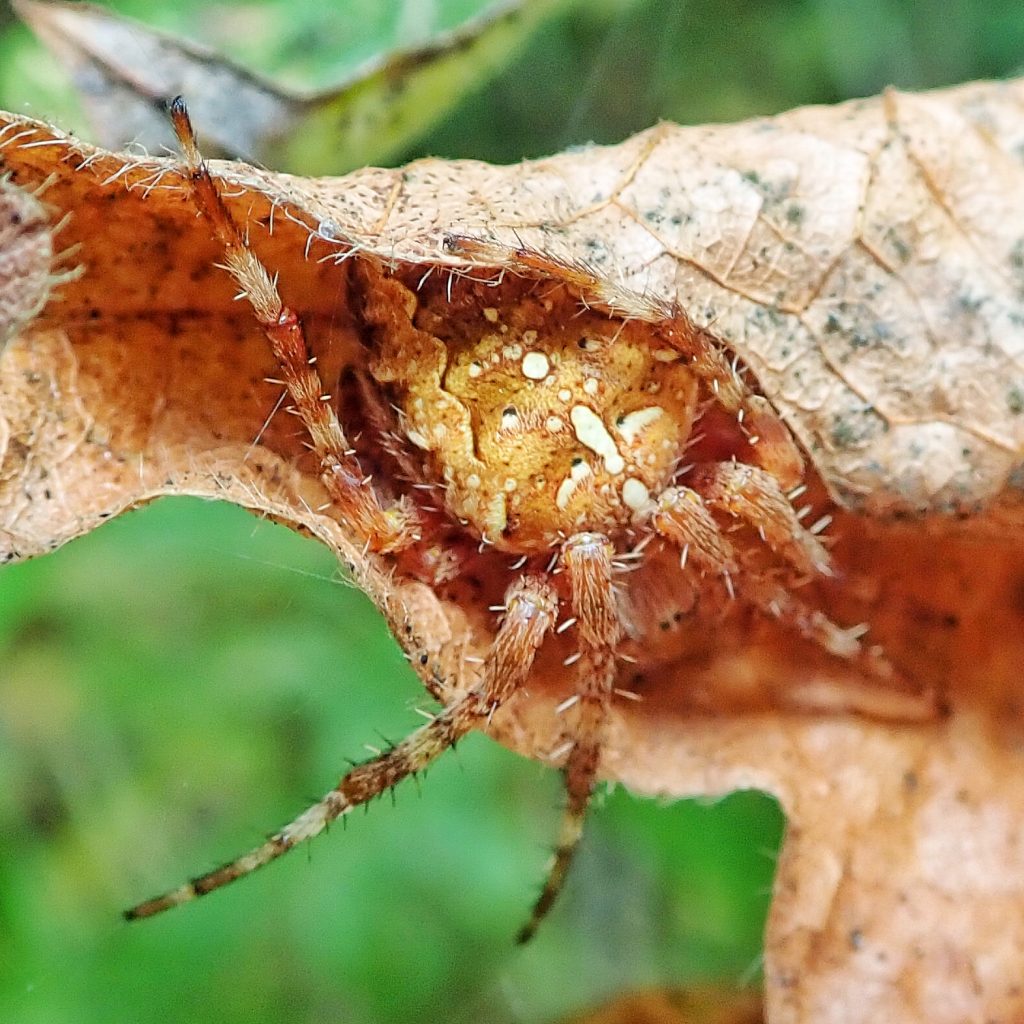
http://bugeric.blogspot.com/2011/08/spider-sunday-cross-spider.html?m=1
https://animaldiversity.org/accounts/Araneus_diadematus/
http://naturemappingfoundation.org/natmap/facts/cross_spider_712.html
Size- Body length up to 19mm for females; males only 8-10mm long
Habitat- Forest edges and fields with structures to hang webs.
Range- Region wide, but absent in the most arid part of the interior.
Eats- Mostly small flying insects
Season- Adults most commonly found in late summer and fall
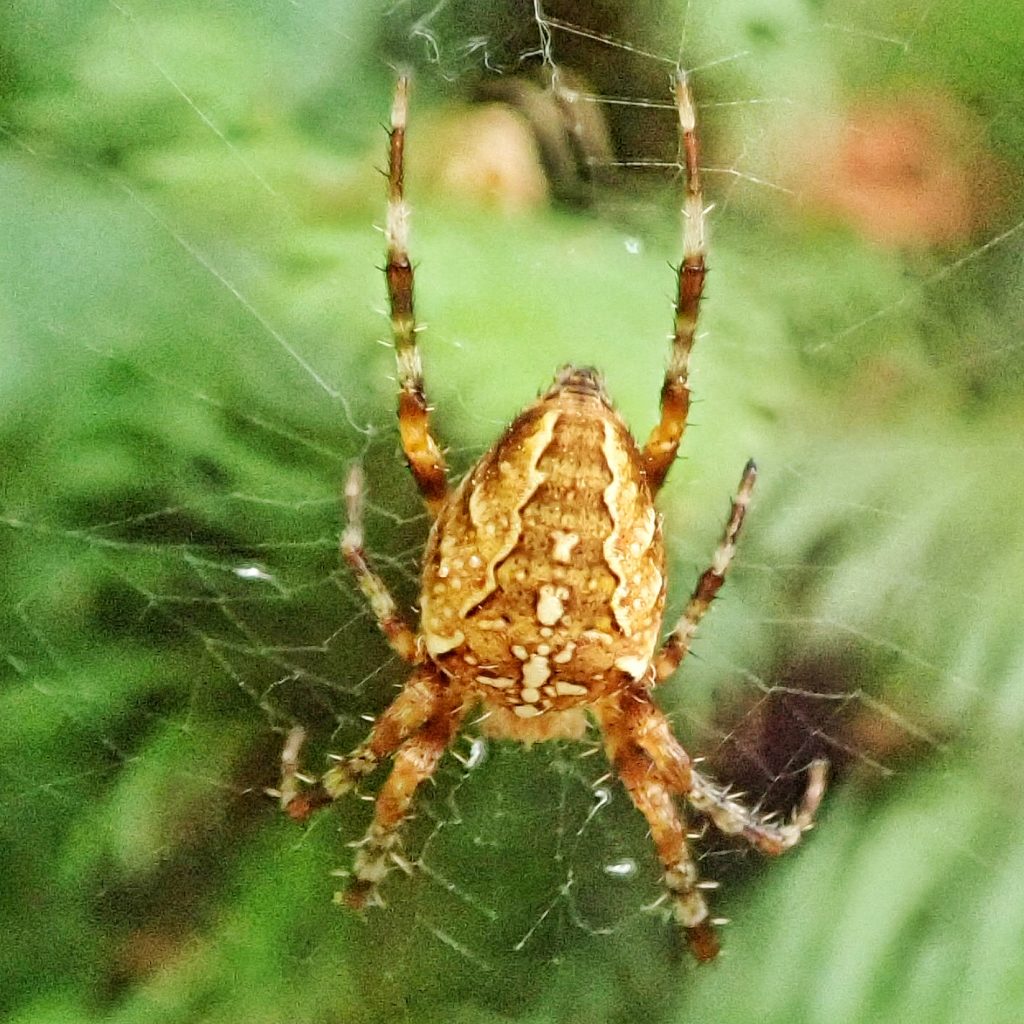
Well done!